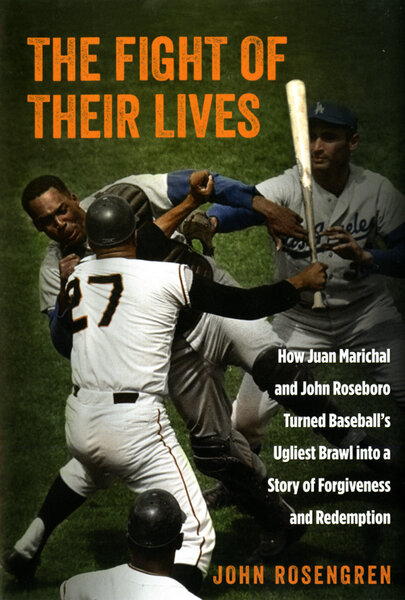By John Rosengren
Lyons Press
288 pages
(During a 1965 game between the Dodgers and Giants, San Francisco's Juan Marichal and L.A.'s John Roseboro engaged in an ugly home plate fight. A famous photograph captured Marichal, who eventually was inducted into the Baseball Hall of Fame, swinging his bat at Roseboro.)
"Johnny knew how Juan had suffered at the hands of the press in the immediate aftermath of their fight and still now 17 years later with every article written about that day and every vote withheld by the BBWAA [Baseball Writers' Association of America] members. That bothered him. The guilt he felt for his part had never completely left him. Here was his chance to let Juan know he wasn't angry at him any longer. His own personal nightmare had convinced him that everybody deserved a second chance.'Okay,' he said. They came up with the idea that Johnny would play in Juan's charity golf tournament in the Dominican Republic. The public gesture would provide opportunities for press coverage in the Caribbean and the United States.
...
"Johnny, who had picked up the game during his days in Los Angeles, played in Juan's golf tournament at Puerto Plata, which was a success. They gave a press conference and posed for photos. That said that the sportswriters had made too much of their altercation in 1965, that it had simply been a game that had gone bad and that they were not enemies. Johnny pointedly said that that day should be forgotten and advocated for Marichal's election into the Hall of Fame. The Dominican papers recorded their remarks and published the photos. The message back to the United States in general and the BBWAA members in particular was clear: We're friends now. You can't hold the past against us any longer."
[Marichal was inducted into the Hall of Fame in 1983, the year after his public rapprochement with Roseboro during Marichal's charity golf tournament.]







